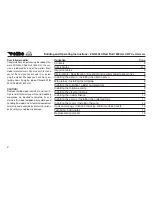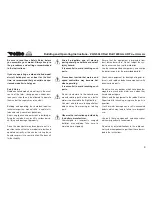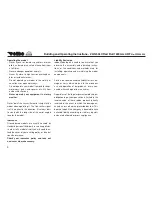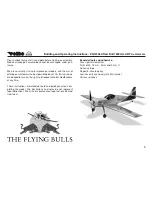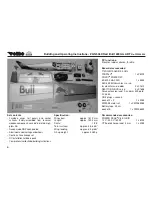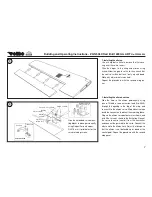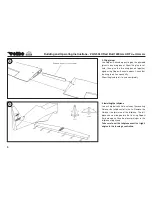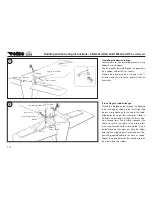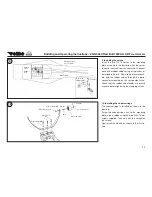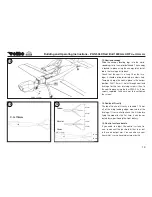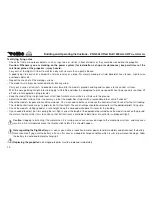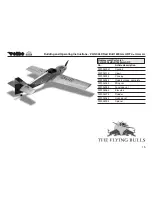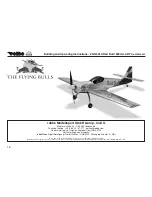
14
Test-flying, flying notes
- Check that there are no loose objects, such as rags, tools or similar, in front of model, as they could be sucked into the propeller.
Caution: Whenever you are working on the power system (for installation, set-up or maintenance), keep well clear of the
rotational plane of the propeller - injury hazard.
- For your first few flights it is best to wait for a day with no more than a gentle breeze.
- A good flying site consists of a field with a tarmac runway, or a large, flat, closely-mown grass field, devoid of trees, fences, high-tension
overhead cables etc.
- Repeat the check of all the working systems.
- The model must always be launched directly into any wind.
- Carry out a series of taxi tests to become accustomed to the model's ground handling and response to the control surfaces.
- With the nose pointing straight into wind, apply full-throttle and allow the aeroplane to pick up speed. When flying speed is reached, lift
off with a brief application of up-elevator.
- Keep the model flying straight and level at first; don’t initiate a turn while it is still close to the ground.
- Adjust the control surface trims if necessary, so that the model flies straight with a reasonable rate of climb “hands off”.
- Check the model's response to control commands . You may need to increase or reduce the control surface travels after the first landing.
- The stated control travels are just a guide for the first few flights. The exact settings should be selected to suit the individual pilot's flying style.
- Check the model's stalling speed at a safe height. Keep the airspeed well above this level for the landing.
- If you needed to adjust the trims during the test-flight, correct the length of the appropriate pushrod once the model is back on the ground,
then return the transmitter trims to centre so that full trim travel is available to both sides of neutral for subsequent flights.
Caution
: stopping (obstructing) the motor when it is turning can cause serious damage to the mechanical system, and may even
result in a fire. Immediately move the throttle stick to Idle if this should happen.
Note regarding the flight battery:
as soon as you notice a reduction in motor power, land immediately and disconnect the battery.
Never continue flying until the battery is flat, as this causes a deep-discharge condition which results in permanent damage. Allow
the battery to cool down before recharging it.
Replacing the propeller:
a damaged propeller must be replaced immediately.
Building and Operating Instructions - ZLIN 50LX Red Bull 1600mm ARF
No. FW004004


